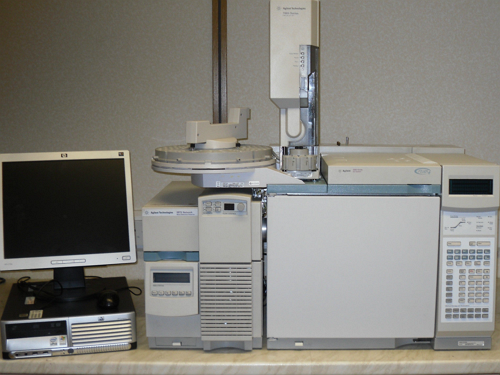Analysis of Linolenic Acid
Linolenic acid is a polyunsaturated fatty acid of 18 carbon atoms. Based on the position of double bond from the methyl end of
fatty acid, linolenic acid is of two types: alpha-linolenic acid ((9Z, 12Z, 15Z)-octadecatrienoic acid) or C18:3 (n-3) and
gamma-linolenic acid ((6Z, 9Z, 12Z)- octadecatrienoic acid) or C18:6 (n-6)).
Alpha-linolenic acid (ALA) is an omega-3 fatty acid found in flaxseeds, chia seeds, hemp seeds and walnuts. It is also present in canola and soybean oil. Microalgae, especially Chlorella species are significant sources of ALA. Among seaweeds, Ulva species are the potent producers.
Fungal species belong to Trichoderma and Penicillium genera are also capable of producing ALA. ALA is an essential fatty acid for humans. Due to its cardio and neuroprotective effects, it has been used as a supplement to reduce the risks of cardiovascular diseases and stroke.
Evening primrose, black current, borage and hemp are plant oils rich in omega-6 fatty acid, gamma-linolenic acid (GLA). GLA is also abundant in oleaginous fungi Mortierella and Mucor species and seaweed Ulva species. Spirulina is a rich source of GLA. GLA is a conditionally essential fatty acid. It is produced from linoleic acid and eventually gets converted to arachidonic acid. GLA has an excellent anti-inflammatory effect and could be included in the treatment of rheumatoid arthritis, diabetes and attention-deficit hyperactive disorder.
Linolenic acid is an effective skin conditioning agent, which can be used in cosmetics. Feeding the cattle with flaxseed meal or soybean meal could increase the omega-3 fatty acid level in milk. Microalgal oil can be an excellent feed additive for hens to improve the omega-3 fatty acid content in eggs.
Alpha-linolenic acid (ALA) is an omega-3 fatty acid found in flaxseeds, chia seeds, hemp seeds and walnuts. It is also present in canola and soybean oil. Microalgae, especially Chlorella species are significant sources of ALA. Among seaweeds, Ulva species are the potent producers.
Fungal species belong to Trichoderma and Penicillium genera are also capable of producing ALA. ALA is an essential fatty acid for humans. Due to its cardio and neuroprotective effects, it has been used as a supplement to reduce the risks of cardiovascular diseases and stroke.
Evening primrose, black current, borage and hemp are plant oils rich in omega-6 fatty acid, gamma-linolenic acid (GLA). GLA is also abundant in oleaginous fungi Mortierella and Mucor species and seaweed Ulva species. Spirulina is a rich source of GLA. GLA is a conditionally essential fatty acid. It is produced from linoleic acid and eventually gets converted to arachidonic acid. GLA has an excellent anti-inflammatory effect and could be included in the treatment of rheumatoid arthritis, diabetes and attention-deficit hyperactive disorder.
Linolenic acid is an effective skin conditioning agent, which can be used in cosmetics. Feeding the cattle with flaxseed meal or soybean meal could increase the omega-3 fatty acid level in milk. Microalgal oil can be an excellent feed additive for hens to improve the omega-3 fatty acid content in eggs.
Click here to place an order for determining Linolenic Acid.
Request a QuoteLinolenic Acid Content
Analysis Packages for Linolenic Acid
Equipment Used for Linolenic Acid Analysis

Gas Chromatograph with Mass Spectrometer (GC-MS)
Our lab has an Agilent 6890 gas chromatograph (GC) coupled to an Agilent 5973 mass selective detector (Mass Spectrometer).
Additional Material
We can determine the Linolenic Acid content of biomass, click here to learn more about our various biomass analysis methods.
We can determine the Linolenic Acid content of seaweed, click here to learn more about our various methods for analysing seaweed.
We can determine the Linolenic Acid content of microalgae, click here to learn more about our various methods for analysing algae.
We can determine the Linolenic Acid content of seaweed, click here to learn more about our various methods for analysing seaweed.
We can determine the Linolenic Acid content of microalgae, click here to learn more about our various methods for analysing algae.





